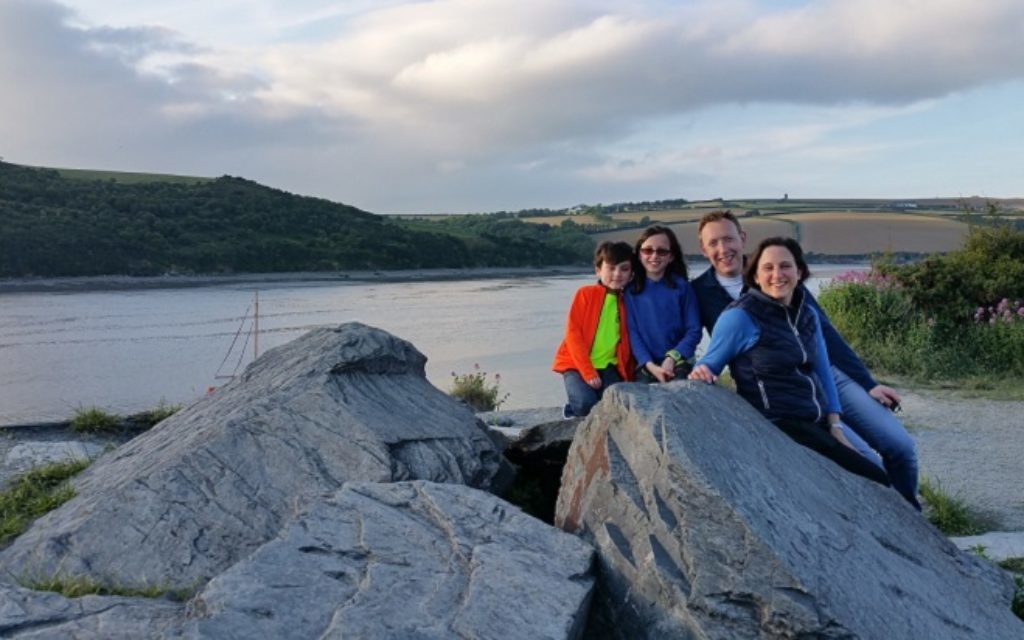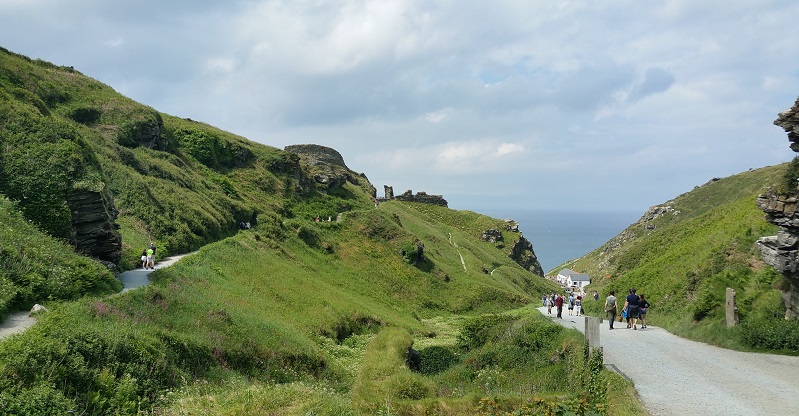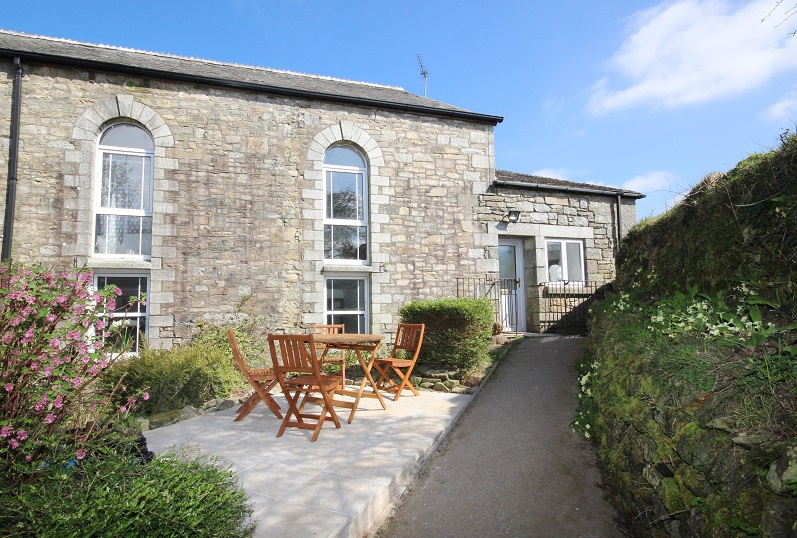Moor than meets the eye!
Alex Galbinski explores the beauty of Bodmin Moor and visits the stunning seascape at Tintagel, the famous birthplace of King Arthur
As we drove down the winding, single track road, enjoying the stunning vistas over the bright green Cornish countryside, another car suddenly appeared – and was driving straight towards us.
“This is going to be interesting,” said my husband. This was not north London, however, and we were pleasantly surprised as the other driver smiled, reversed and waited for us to pass.
We were certainly a long way from home and it was something of a relief to finally open the door to The Organ Loft at Thorne Cottage.
Get The Jewish News Daily Edition by email and never miss our top stories Free Sign Up
A converted 1870 Methodist Chapel, the holiday cottage is located in the centre of St Breward, an ancient village on the western edge of Bodmin Moor, famous for its granite and china clay quarries and which boasts the highest church in Cornwall, at about 700ft.
The beautiful two-bedroom accommodation, which was once the pulpit and organ loft of the chapel, retains many of its architectural features, including high arched and stained glass windows, ornate wood panelling and a spiral staircase with a polished concrete pillar and stairs made from the original church pews.
It was cosy and tastefully decorated in coastal hues, featuring all the mod cons a family needs.
The children were particularly taken with the small games room, which contained a fusbal table, while I enjoyed the feeling of space set over three floors and attention to detail, down to the pictures of Cornwall and the seaside-themed mugs.
The Organ Loft can be rented together with the adjacent Providence House for larger groups and it was the perfect base from which to explore the sublime surrounding area.
We dined in the nearby Old Inn and Restaurant, Cornwall’s highest inn that dates back to the 11th century when it gave shelter to the monks who built the neighbouring church.
Reminiscent of a cosy Hampstead pub, it has a vast menu that naturally includes various freshly-caught fish.
The next morning, after a leisurely breakfast at The Shed, a fabulous brunch bar, we drove to Tintagel, and walked up to the 13th century castle that is set around some truly dramatic clifftop views.
The site, said to be the birthplace of King Arthur and with a connection to the love story of Tristan and Iseult, began as an Early Medieval trading port and settlement.
You can walk along the ruins, climb up to Tintagel island and investigate Merlin’s Cave on the beach.
We returned to Wadebridge to hire bikes and ride along the Camel Trail –
a flat, five-mile disused railway track beside the River Camel and had been advised it would be much quieter and peaceful in the later afternoon.
Flanked by lush green hills on one side and the Camel Estuary on the other, the views were breath-taking.
We made it to the halfway point in time to see the Treats on Trikes seller who was packing up, but we bought a delicious chocolate brownie, which helped bribe the children on to the picturesque harbour town of Padstow for dinner.
Wanting to visit one of Cornwall’s many beautiful shores, we drove the following day to Polzeath, an award-winning flat beach popular with surfers – and it won the approval of our children.
While they enjoyed jumping the waves and hunting for shells, I went for a sneaky look around the pretty interiors and gift shops.
Next, we headed towards Minions; no, not the yellow cartoon creatures, but the highest village in Cornwall, located on Bodmin Moor and star location of BBC’s Poldark. Again, the rugged scenery catches you off-guard; you can see for miles across the Cornish countryside.
We made our way to The Hurlers, three granite stone circles dating from the Early Bronze Age (around 1,500 BC) which, according to local legend, were men who were turned to stone as a punishment for playing the game of hurling on a Sunday.
A short walk away across the moor – neatly dodging the cows and sheep grazing in the fields – are the Cheesewring, a natural formation of granite on Stowes Hill that balance on each other and are believed to have been formed by weather erosion over thousands of years.
Cornwall is famous for its gardens and, while we would have loved to have explored many others, including Lanhydrock in Bodmin and the famed Lost Gardens of Heligan in Saint Austell, we were limited for time.
So we ended our Cornish stay with a visit to the Eden Project, a former china clay pit now transformed into an outstanding area of beauty, with giant greenhouses and a global garden.
The best parts were walking through the biomes, which house Mediterranean landscapes and the largest rainforest in captivity, as well as stunning plants, crop displays, art installations and much more.
Adrenalin junkies can soar along England’s longest and fastest zip wire and plummet over cliff edges in a giant swing among other activities.
Cornwall has a small but vibrant Jewish community of around 100 members, Kehillat Kernow.
Associated with the Reform movement, it holds Shabbat services on a fortnightly basis in Truro and Rosh Hashanah services at a retreat in Helston.
There is so much to do in Cornwall that we barely scratched the surface. We will no doubt return before too long.
Where to stay: Alex was a guest at The Organ Loft, a two-bedroomed self-catering cottage in St Breward, one of more than 250 properties available for holiday lets through Cornish Traditional Cottages (01208 895 354; corncott.com). Rental of The Organ Loft ranges from £311 to £710 per week.

Thank you for helping to make Jewish News the leading source of news and opinion for the UK Jewish community. Today we're asking for your invaluable help to continue putting our community first in everything we do.
For as little as £5 a month you can help sustain the vital work we do in celebrating and standing up for Jewish life in Britain.
Jewish News holds our community together and keeps us connected. Like a synagogue, it’s where people turn to feel part of something bigger. It also proudly shows the rest of Britain the vibrancy and rich culture of modern Jewish life.
You can make a quick and easy one-off or monthly contribution of £5, £10, £20 or any other sum you’re comfortable with.
100% of your donation will help us continue celebrating our community, in all its dynamic diversity...
Engaging
Being a community platform means so much more than producing a newspaper and website. One of our proudest roles is media partnering with our invaluable charities to amplify the outstanding work they do to help us all.
Celebrating
There’s no shortage of oys in the world but Jewish News takes every opportunity to celebrate the joys too, through projects like Night of Heroes, 40 Under 40 and other compelling countdowns that make the community kvell with pride.
Pioneering
In the first collaboration between media outlets from different faiths, Jewish News worked with British Muslim TV and Church Times to produce a list of young activists leading the way on interfaith understanding.
Campaigning
Royal Mail issued a stamp honouring Holocaust hero Sir Nicholas Winton after a Jewish News campaign attracted more than 100,000 backers. Jewish Newsalso produces special editions of the paper highlighting pressing issues including mental health and Holocaust remembrance.
Easy access
In an age when news is readily accessible, Jewish News provides high-quality content free online and offline, removing any financial barriers to connecting people.
Voice of our community to wider society
The Jewish News team regularly appears on TV, radio and on the pages of the national press to comment on stories about the Jewish community. Easy access to the paper on the streets of London also means Jewish News provides an invaluable window into the community for the country at large.
We hope you agree all this is worth preserving.
-
By Laurent Vaughan - Senior Associate (Bishop & Sewell Solicitors)
-
By Laurent Vaughan - Senior Associate (Bishop & Sewell Solicitors)
-
By Laurent Vaughan - Senior Associate (Bishop & Sewell Solicitors)
-
By Laurent Vaughan - Senior Associate (Bishop & Sewell Solicitors)
























